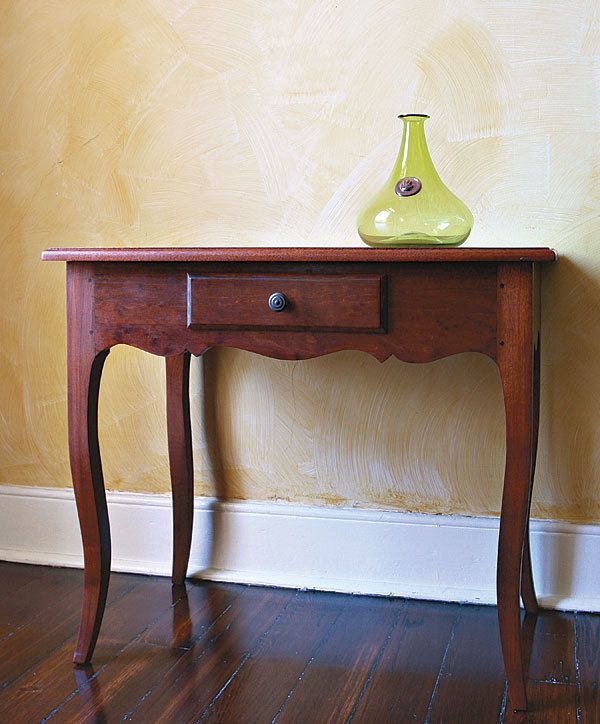Build a Louisiana Creole Table
Cabriole legs and scalloped aprons spice up a rustic table.

Synopsis: This table, a close reproduction of an original built around 1800, is a wonderful example of Louisiana Creole style. The legs are cabriole and the bottom edge of the aprons is scalloped, but the lack of carvings, inlays, or other complex details gives the table a rustic feel. Like its style, the table’s construction is a mix of the exotic and the familiar. The legs are joined to the aprons with pegged mortise-and-tenons. The cabriole legs and scalloped edges, even though they look exotic, aren’t difficult to make.
Creole furniture is my heritage. as a professional furniture maker and native of Louisiana (I now live and work just north of new Orleans), I’ve been making it for several decades. So I was delighted when the editors asked me to make a piece of Creole furniture for Fine Woodworking. Like much of Louisiana’s culture, its furniture grew from French and Spanish influences tempered by the reality of living in a frontier territory. Creole furniture has a hint of refined style, but also an earthy charm. There’s plenty of elegance without too much flash.
This table, a close reproduction of an original built around 1800, is a wonderful example of how Louisiana furniture makers took the refined styles of other cultures and transformed them into a unique style all their own. The legs are cabriole and the bottom edge of the aprons is scalloped, but the lack of carvings, inlays, or other complex details gives the table a rustic feel. Like its style, the table’s construction is a mix of the exotic and the familiar. The legs are joined to the aprons with pegged mortise-and-tenons. It’s a common joint for a table, but I start with the tenons. I’ll demonstrate how I do it. and the opening for the drawer is made by ripping the front apron into three pieces and then gluing it back together after the drawer front has been cut free. I’ll show you how I do that, too. The cabriole legs and scalloped edges, even though they look exotic, aren’t difficult to make.
Finally, I made the table entirely from Honduras mahogany. The original has a mahogany top on a cherry base, but Creole furniture was also made from walnut, pecan, hickory, and Spanish cedar. You could choose any of these.
Tenons Before Mortises
 I began the base with the aprons, including their tenons, and then shaped and mortised the cabriole legs. I know that it’s more common to mortise first and cut tenons second. However, if you have a hollow-chisel mortiser like I do, you can start with the tenons, and it’s a snap to get the mortises afterward.
I began the base with the aprons, including their tenons, and then shaped and mortised the cabriole legs. I know that it’s more common to mortise first and cut tenons second. However, if you have a hollow-chisel mortiser like I do, you can start with the tenons, and it’s a snap to get the mortises afterward.
Of course, you can’t cut any tenons until you’ve made the aprons. There’s nothing tricky about the side and back aprons. Mill them square and cut them to their final dimensions (make a spare apron or two for test cuts).
Download the plans for this table from the Digital Plans Library. Plus, browse 100+ other plans available for members only.
For the full article, download the PDF below:
Fine Woodworking Recommended Products

Festool DF 500 Q-Set Domino Joiner

Bessey EKH Trigger Clamps

Jorgensen 6 inch Bar Clamp Set, 4 Pack








Log in or create an account to post a comment.
Sign up Log in